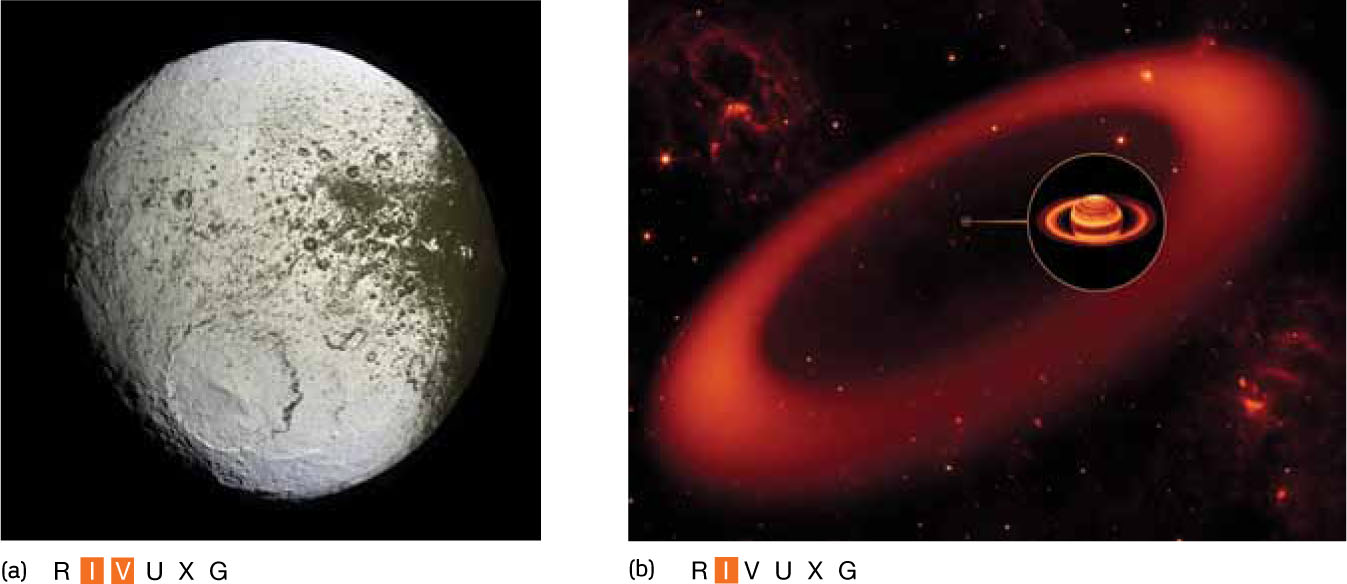
Figure 13-30: The Two Faces of Iapetus (a) This color-enhanced Cassini image shows nonreflective material on leading face of Iapetus. The contrast is not very strong in true color, but the contrast is very strong when comparing reflectivity: The lighter side reflects like somewhat dirty ice, whereas the darker side reflects like black charcoal. (b) The leading model to explain the two faces requires debris to create some initial color differences, which is thought to come from a very large ring observed in the infrared by the Spitzer Space Telescope. Discovered in 2009, this ring has a diameter about 300 times larger than Saturn. This is an artist’s illustration of the ring, with an inset of Saturn in the infrared.
(a: NASA/JPL/Space Science Institute; b: NASA/JPL-Caltech/R. Hurt (SSC)